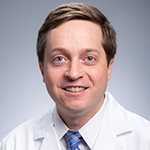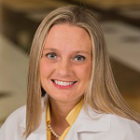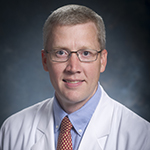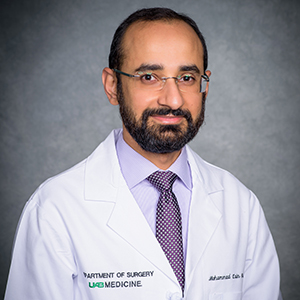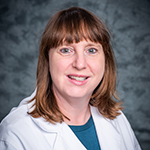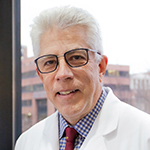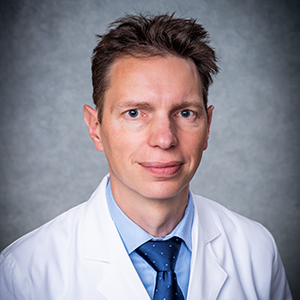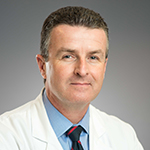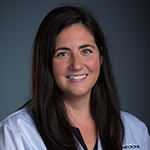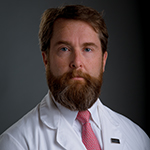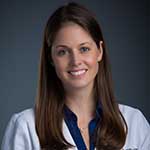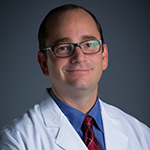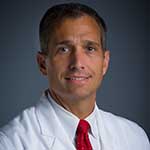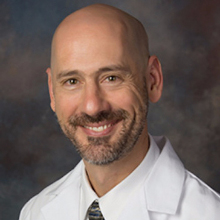Faculty
-
Bariatric Surgery and Metabolism
Led by Jayleen Grams, M.D., Ph.D., this program focuses on glucose and skeletal metabolism through the study of osteocalcin, a bone-derived protein, using an osteocalcin knockout animal model developed here at UAB. Additionally, current efforts are directed toward using an animal model of Roux-en-Y gastric bypass to investigate the impact of bariatric surgery on skeletal biology and health as well as on the central nervous system and microbiome.
-
Betzold, Richard D., M.D.
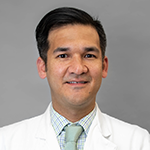 Clinical Assistant Professor
Clinical Assistant ProfessorAreas of Interest
trauma and acute care surgery, vascular trauma with the evolution of vascular trauma care, advancing minimally invasive techniques into trauma and acute care surgery, ways to optimize resident education -
Black, Jonathan, M.D.
Assistant Professor
Associate Principal, Office of Clinical Practice TransformationAreas of Interest
trauma systems, quality improvement, surgical critical care -
Carroll, Shannon L., M.D.
Associate Professor
Areas of Interest
trauma, surgical critical care, motor vehicle crash injury prevention -
Chaudry, Irshad, Ph.D.
Professor Emeritus
Areas of Interest
trauma, hemorrhage, sepsis, gender dimorphism, immune functions, cardiovascular functionsChemoprevention of Breast Cancer
Chemopreventive agents must be administered on a long-term basis to healthy individuals; hence, emphasis must be placed not only on efficacy but also on a high level of safety. In addition, cancers develop through a multistep process in which molecular and biochemical alterations accumulate in target cells over long periods of time, the end result of which is a clinically apparent malignancy. Development of effective chemopreventive agents, or combinations of agents requires identification of the points in this process in which intervention with a pharmacologic agent or changes in diet through consumption of natural botanicals or modification of diet-related components could inhibit, reverse and/or delay development of invasive and/or metastatic cancers and a knowledge of their mechanisms of action.
Chemoprevention of Colorectal Cancer
Led by Dr. Greg Kennedy, these research efforts are focused on chemoprevention of colon and rectal cancer. His funded laboratory uses genetic models to better understand how chemicals prevent tumor formation and what genetic pathways are responsible for their effects. The ultimate goal is to identify targeted agents that are better tolerated by patients in hopes of preventing colon and rectal cancer.
Cox, Daniel B., M.D.
Associate Professor
Chief, Trauma Service
Trauma Medical DirectorAreas of Interest
trauma, surgical critical care, trauma systems, military medicineDay, Russell, M.D.
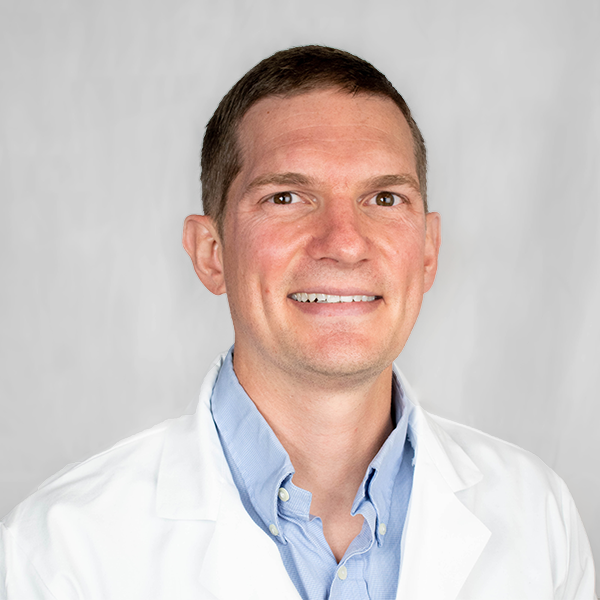 Assistant Professor
Assistant ProfessorAreas of Interest
combat casualty care, emergency response, shock, resuscitation, critical care, translational medicine, medical education, austere medical care, extracorporeal life supportGelbard, Rondi B., M.D.
Associate Professor
Trauma/Burn ICU Medical Director
Chief of Critical Care ServiceAreas of Interest
trauma, critical care, emergency general surgery, surgery education research, biomarkers, wound healingGoddard, Sabrina, M.D.
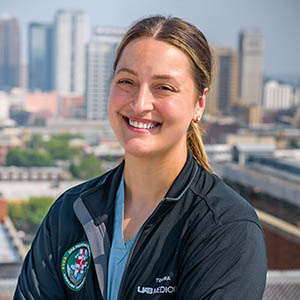 Assistant Professor
Assistant ProfessorAreas of Interest
trauma and acute care surgeryHashmi, Zain, M.D.
Areas of Interest
trauma systems, trauma benchmarking, quality improvement, surgical critical careHazen, Benjamin, M.D.
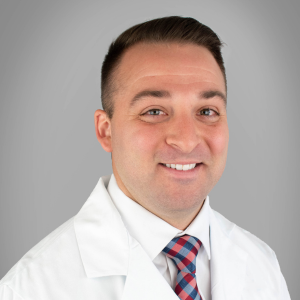 Clinical Assistant Professor
Clinical Assistant ProfessorAreas of Interest
hemorrhage control and the use of whole blood, integrating minimally invasive surgery in trauma, and the optimization of resident education and autonomyHemorrhage
This program fosters research and instruction in the areas of trauma and hemorrhage to translate the experimental studies to the bedside using novel treatment modalities so that complications and mortality rates in such trauma patients can be decreased.
Along with the Center for Phase I Studies, the pharmacokinetic and pharmacodynamic studies have been contracted to a GLP facility to obtain safety and toxicity information for filing an IND application and obtaining approval from the FDA for conducting the Phase I studies of EE-3-SO4. More specifically, the contract titled “Surviving Blood Loss: First In Human Studies To Assess Safety And Physiological Effects Of Synthetic Ethinyl Estradiol-3-Sulfate (EE-3-SO4) In Healthy Subjects Both Euvolemic And Following 10-20% Inatrogenic Blood Loss” has been awarded since September 2015 to the tune of $10 million to complete the preclinical studies so that Phase I studies of EE-3-SO4 can then be performed.
Hendershot, Kimberly M., M.D.
Professor
Co-Director, Women in Surgery Program
Director of Education, Division of Trauma & Acute Care SurgeryAreas of Interest
trauma systems, surgical critical care, trauma and surgical educationHolcomb, John B., M.D.
Professor
Areas of Interest
acute care surgery, injury research, trauma surgeryHurst, Stuart D., M.D.
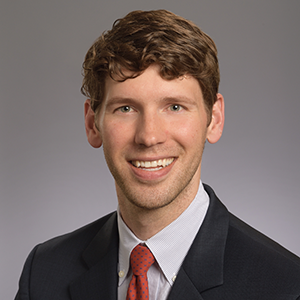 Assistant Professor
Assistant ProfessorAreas of Interest
clinical outcomes in trauma, trauma systems, the management of the injured patient, surgical education, penetrating cardiac injury, emergency general surgeryHwang, James, M.D.
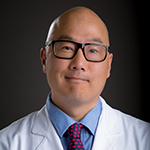 Associate Professor
Associate Professor
Director, UAB Burn Center
Chief, Burn ServiceAreas of Interest
burn surgery, wound healing, wound careInnate Immunity in Kidney Injury and Homeostasis, Mechanisms of Heme and Iron Metabolism
This laboratory is engaged in the study of how intrarenal mononuclear phagocytes regulate kidney homeostasis and disease, and how they modulate a transition from acute to chronic disease. A second area of concentration is in the role of heme and iron metabolism in cellular homeostasis and in protection from organ failure. These studies are approached through the creation of unique strains of mice in which particular genes involved in molecular pathways of interest are manipulated to be expressed or deleted within specific cellular compartments. The research is funded primarily by extramural grants from the National Institutes of Health and the American Heart Association as well as philanthropic donations. As part of a NIH P-30 funded core, the laboratory also maintains the Small Animal Microsurgical Core Facility which performs over 1,000 procedures per year for investigators at UAB and other institutions. Procedures include heart and kidney transplantation, ischemia-reperfusion studies, cannulations, and custom services.
Jansen, Jan, MBBS, Ph.D.
Professor
Associate Vice Chair for Clinical Trials
Director of Research, Division of Trauma & Acute Care Surgery
Director, UAB Center for Injury ScienceAreas of Interest
trauma, critical care medicine, clinical trialsKerby, Jeffrey D., M.D., Ph.D.
Professor
Brigham Family Endowed Professor in Trauma and Acute Care Surgery
Director, Division of Trauma and Acute Care SurgeryAreas of Interest
trauma, surgical critical care, acute care surgery, pre-hospital emergency careManley, Nathan, M.D., M.S., MPH
 Assistant Professor
Assistant ProfessorAreas of Interest
trauma and acute care surgeryNeuroendocrine Cancer
Neuroendocrine (NE) tumors are the second most common cause of isolated hepatic metastases. These tumors often cause debilitating symptoms due to excessive hormonal secretion which characterize these NE lesions. Besides surgery, there are limited curative and palliative treatments available to patients with NE tumors, emphasizing the need for development of other forms of therapy. Notch1 is a multi-functional transmembrane receptor that plays an important role in cellular differentiation in the gastrointestinal (GI) tract. Similar to its role in developing nervous tissues, Notch1 signaling is thought to mediate a process called lateral inhibition within the GI tract. During GI development, multipotent cells destined to differentiate into enteroendocrine cells express the Notch1 ligand, Delta. Delta then binds to Notch1 receptors on neighboring undifferentiated cells. This triggers activation of Notch1 within the undifferentiated cells, leading to a cascade that inhibits the expression of pro-endocrine genes. Thus, the overall effect is to limit the number of cells which can differentiate into enteroendocrine cells. The lab has recently shown that over expression of Notch1 in GI carcinoid cells as well as in medullary thyroid cancer cells causes a dramatic reduction in hormone production accompanied by growth suppression. His group is currently developing animal models of GI carcinoid and medullary thyroid tumor progression to investigate the possible role of Notch1 in suppressing hormone production by these tumors. This group is also initiating clinical trails with Notch1 activating compounds.
Pediatric Solid Tumors
Cell survival signaling with the focus on focal adhesion kinase and its relation to other signaling molecules such as I2PP2A and PIM with the goal to develop novel therapeutics for neuroblastoma and other pediatric solid tumors. Basic science including in vitro and in vivo work.
Pierce, Virginia S., M.D.
Associate Professor
Areas of Interests
acute care surgery, resident and medical student educationReiff, Donald A., M.D.
Professor
Areas of Interest
trauma and surgical critical care, motor vehicle crash injury prevention, military trauma trainingRichter, Jillian R., Ph.D.
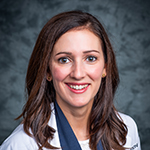 Associate Professor
Associate Professor
Co-Director, Short-Term Research Experiences Advancing Medical Students (STREAMS)Areas of Interest
trauma, hemorrhage, resuscitation, endothelial glycocalyx, lung injury, bioengineered in vitro models, mechanotransduction signalingRue, Loring W., M.D.
Professor
Chief Medical OfficerAreas of Interest
surgical critical care, trauma, trauma system development, quality, patient safety, and clinical and operational effectivenessShi, Xiaoming, M.D.
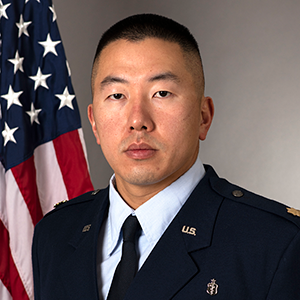 Clinical Assistant Professor
Clinical Assistant ProfessorAreas of Interest
trauma and acute care surgery, robotic surgical techniques, simulation curriculumStigall, Kyle, M.D.
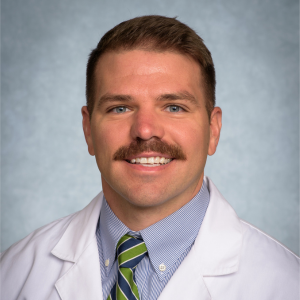 Clinical Assistant Professor
Clinical Assistant ProfessorAreas of Interest
hemorrhage control, REBOA, trauma resuscitationTanner, Lauren C., M.D.
Associate Professor
Chief, Emergency General Surgery Service
Program Director, Trauma and Surgical Critical Care FellowshipAreas of Interest
acute care surgery, resident and medical student educationTraumatic Hemorrhage and Fluid Resuscitation
This basic science and translational research program is focused on elucidating the cause-and-effect mechanisms of endotheliopathy that drive organ dysfunction and coagulation abnormalities in the setting of traumatic injury and hemorrhagic shock. In combination with clinical studies and animal models of injury and inflammation, we utilize custom-designed bioengineered cell culture systems to study the impact of resuscitation strategies on glycocalyx degradation and glycocalyx structural modifications that dictate mechanisms of vascular inflammation, endothelial hyperpermeability, aberrant coagulation and impaired vasoreactivity. Our research efforts are aimed at the identification of therapeutic strategies to protect, restore or modify the endothelial glycocalyx to mitigate endotheliopathy and improve clinical outcomes for trauma patients.
Vander Noot, R. Marty, M.D.
Associate Professor
Chief, Inpatient Wound Care ServiceAreas of Interest
international medicine, emergency medicine, wound care, hyperbaric oxygenWan, Ryan, D.O.
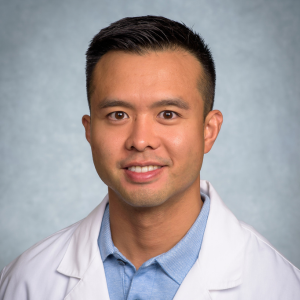 Clinical Assistant Professor
Clinical Assistant ProfessorAreas of Interest
trauma and acute care surgery, pediatric trauma, resident and medical student educationWindham, Samuel T., III, M.D.
Professor
Chief, Surgical Critical Care Service
Medical Director, Legacy of HopeAreas of Interest
surgical critical care, wound closure, trauma systems development, pre-hospital notification and injury prediction, blunt or penetrating trauma, organ recoveryWinkler, Jon P., M.D., Ph.D.
Assistant Professor
Areas of Interest
trauma, emergency general surgery, surgical critical care, laparoscopy, minimally invasive surgeryWnt Signaling in Cancer
This lab looks at the role that Wnt plays in the early transformation of a cancer into a metastasis. Also trying to understand the role of pancreaticogenic diabetes in the pathogenesis of pancreatic cancer.
Wound Healing
This lab, led by Dr. Tim King, has had a keen interest in combining molecular biology, cellular biology and biomaterials science to the practice of medicine. He has discovered that Notch, a family of transmembrane proteins that play a role in multiple cell-fate decisions, is important for the proliferation, migration and differentiation of keratinocytes. In an in vivo excisional wound model, he has shown that activation of Notch significantly improves the rate of wound healing in both normal and diabetic mice. In addition, using a novel 3-D organotypic wound model developed in his laboratory, Dr. King found that the Notch isoforms are expressed in a spatial-temporal fashion within wounds and that activation of Notch increases both the rate of wound closure as well as the epidermal thickness of the healed wound.
Xenotransplantation
A shortage of organs available for transplantation has led UAB to pursue preclinical studies utilizing a porcine xengrafts as a supply for xenokidneys for transplantation. This program's goal is to start genetically modified pig kidney transplants to humans by 2021.
